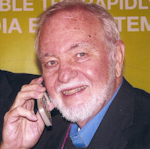Image courtesy of Thinkstock.
G.fast—the latest and fastest version of DSL—may eventually deliver a super-fast upgrade in speed to DSL users. Late last year, the International Telecommunications Union (ITU) approved this new version of the digital-subscriber-line (DSL) standard for Internet access over the plain old telephone service (POTS), also known as the public switched telephone network (PSTN). POTS uses the massive installed base of unshielded twisted-pair wiring from telephone central office to the home or office.
G.fast’s formal ITU standard designation is G.9701. Its claim to fame is that it can deliver aggregate download/upload speeds of up to 1 Gb/s to and from the consumer over existing wiring.
DSL was the original technology for fast Internet access. It was available almost everywhere, and got faster over time as new standards were developed and deployed. Speeds reached about 8 Mb/s on average, but faster ADSL2 and VDSL versions provided up to 100 Mb/s in some locations. Then cable TV came along offering its own higher-speed Internet service over its widely installed hybrid-fiber-coax (HFC) networks.
Today, cable TV dominates high-speed Internet service in the U.S. mainly because it’s usually faster for the same price. DSL is still widely used, but its installed base has stopped growing. It continues to dominate Internet access in Asia, Europe, and generally worldwide besides the U.S., though.
Google has also entered the Internet access competition with its all fiber-to-the-home (FTTH) service called Google Fiber. It delivers up to 1-Gb/s downloads. Google Fiber is available now in Austin, TX, Kansas City, and Provo, Utah, and will be rolling out to nine other cities in the coming years. AT&T is also installing its own 1-Gb/s all-fiber service called GigaPower in selected cities. FTTH is great for new home areas, but overly expensive to install in existing neighborhoods.
On top of that, cable TV is upping its speed capabilities by installing the latest DOCSIS 3.1 standards. Rates in some areas are already up to 300 Mb/s, with even higher rates possible down the road. That leaves DSL subscribers way behind in third place. Now, with G.fast, DSL subscribers may eventually see competitive speeds on their telephone lines.
DSL uses a form of orthogonal frequency-division multiplexing (OFDM) called discrete multitone (DMT) to transmit data on the twisted pair. Depending on the type of DSL, DMT will use from 1 to 30 MHz of spectrum on the line.
The fastest version, VDSL2, utilizes the full 30 MHz and can achieve up to 200 Mb/s in some cases. The overall achievable rate depends on the distance from the subscriber’s modem to the neighborhood DSL access multiplexer (DSLAM). The telco distributes the service usually via a fiber-optic cable to the DSLAM, then over the existing telephone cable to the homes. The range varies widely from about 2000 feet to over 5000 feet. VDSL2 runs out of speed at about 2000 feet.
G.fast reaches its higher speeds by locating the distribution point unit (DPU) closer to the home. The 1-Gb/s rate is usually achieved at a range of under approximately 70 meters—and that represents the combined download and upload speeds. That’s because G.fast uses time-division duplexing rather than the frequency-division duplexing of other DSL flavors. The mix can be varied; for instance, 500 Mb/s up and down or 800 Mb/s down and 200 Mb/s up. Typically, the rates will be less depending on the cable length, which is generally restricted to 250 meters maximum.
The main speed-limiting factor concerns the crosstalk between pairs in a cable bundle. One line couples its signal into another along the cable. This far-end crosstalk (FEXT) can be eliminated or minimized by a noise-cancelling technology called vectoring. Vectoring requires lots of processing power, but it makes fast DSL possible.
One promising feature of G.fast is that the distribution point boxes for up to 20 homes are very small. Called fiber-to-the-distribution-point (FTTdp) units, they can be powered over the twisted-pair connection from the subscriber’s modem. This reverse-power-feeding (RPF) technology greatly simplifies installation and lowers costs dramatically.
G.fast is a cool new standard that should keep DSL and the telco service providers competitive in the years to come. With silicon already available, watch for deployments as early as later this year.
Some of the companies pursuing G.fast include ADTRAN, Alcatel-Lucent, Arteris, Broadcom, Lantiq, Marvell, Microsemi, and Sckipio. G.fast certification will be handled by the Broadband Forum. The University of New Hampshire Interoperability Laboratory (UNH-IOL) will do the testing.


